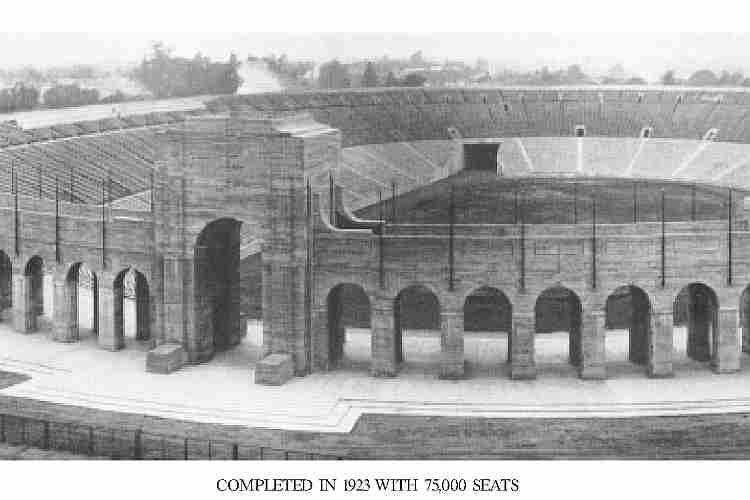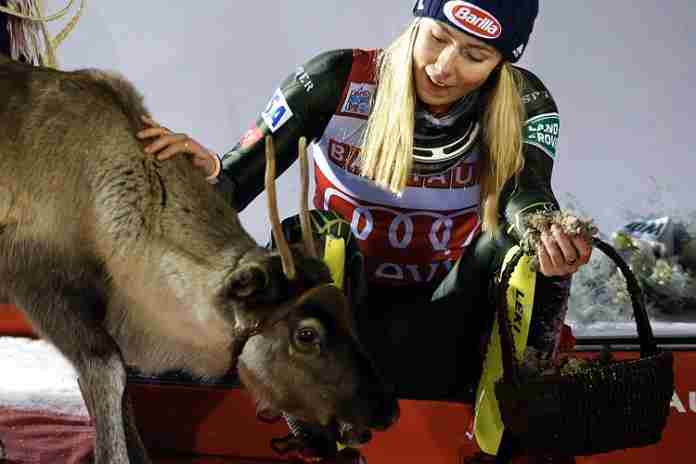(Thanks to all who sent get-well wishes during my recent illness, which were very much appreciated.)
Los Angeles is well known today as the host of two ultra-successful Olympic Games in 1932 and 1984, with a third coming in 2028. But that history had a start and it was 100 years ago this week.
The post-event Official Report of the Games of the Xth Olympiad noted that while the 1932 Games was a major success, the genesis started more than a decade earlier, in a typical manner associated with expanding cities of the early 20th Century:
“In the year 1919 there was formed in Los Angeles, at the instance of the publishers of the daily newspapers of the city, the California Fiestas Association, for the purposes of reviving the old Spanish fiestas typical of the atmosphere of our State and City.”
There were quite a few newspapers in those days and the dailies pushing to promote the area likely included the Los Angeles Evening Express, Los Angeles Herald, Los Angeles Examiner, Hollywood Citizen, Los Angeles Record and the only still-existing publication, the Los Angeles Times.
The Fiestas Association didn’t last long, only for about a year, but it had an impact. In order to mount a “fiesta” of some stature, the report says, it “became obvious almost immediately that the contemplated project could not proceed without there first being provided the facilities of a stadium.”
That was the birth of what turned out to be the Los Angeles Memorial Coliseum.
At the same time, there was another idea brewing to help promote the Los Angeles area:
“For several years there had been a growing consciousness in local sports circles of the possibility of holding the Olympic Games in Los Angeles. At a meeting of the California Fiestas Association held November 26, 1919, Maximilian F. Ihmsen, one of the directors, presented the suggestion that later resulted in the first formal application by the City of Los Angeles to the International Olympic Committee for the award of the Games.”
Max Ihmsen. Who was he?
It turns out that Ihmsen was a political and press dynamo, working in the service of William Randolph Hearst. Born in Pennsylvania, he had worked for Hearst when the latter entered the newspaper field in 1895, originally for the New York Journal.
Ihmsen became the head of the Hearst Washington Bureau during the Spanish-American War, went back to the Journal, then was political editor of one of Hearst’s new papers, the New York American in 1902. He helped try to have Hearst selected as the Democratic Party candidate for the 1904 Presidential election, and later helped manage Hearst’s unsuccessful campaign for Mayor of New York.
In 1908, Hearst sent Ihmsen west to head another new paper, the Los Angeles Examiner, and it was as head of the Examiner that he proposed bringing the Olympic Games to Los Angeles.
His suggestion had legs. The head of the California Fiestas Association was a real-estate developer named William May Garland, who was already planning a European vacation in the summer of 1920, when the Olympic Games would be held in Antwerp, Belgium.
Completely in line with what happens today, Garland took with him a set of plans for the new stadium, letters of invitation from the City and County of Los Angeles and the State of California and documentation about how Los Angeles would make a great host.
Garland met with the International Olympic Committee while in Belgium and while the organization did not award the Games to Los Angeles for 1924 (Pairs) or 1928 (Amsterdam), it did elect Garland as a new member of the IOC!
At the same time, the stadium concept was taking shape. The California Fiestas Association dissolved and was replaced by the Community Development Association, which became a powerhouse organization in the expansion of Los Angeles. The CDA arranged with the City and County for a joint program of financing and construction of a new stadium, to be placed on the site of an abandoned horse-racing facility south of downtown that had previously been a gravel pit.
The stadium got built straightaway and by the time Garland proposed Los Angeles as the site for the 1932 Olympic Games in 1923, it was nearly completed and the IOC awarded the Games to Los Angeles unanimously.
The Coliseum – originally called the Colosseum as per the famed Roman structure from antiquity – was completed with 76,000 seats and had its first sporting event on October 1, 1923, when the USC Trojans football team defeated Pomona, 23-7, before 12,836.

That first game attendance wasn’t too impressive, but a month later (Nov. 10), some 63,408 showed up to see the Trojans lose to the University of California, 13-7. Just three years later, the Coliseum had 74,661 on hand to see USC play Stanford in 1926 and 74,378 a month later for the first game of the USC-Notre Dame series.
By 1928, the Olympic organizing effort got moving and the stadium was expanded with a third section all the way around the top to enlarge the capacity to 105,000 seats, where it remained until individual seats replaced the bench seating in the 1960s.
Ihmsen, unfortunately, didn’t live to see any of this. Following a lengthy illness, he died in early May of 1921 – at age 53 – and never saw the Coliseum in operation, or the 1932 Games.
But he started the process by which Los Angeles became one of the world’s greatest Olympic cities and the Coliseum became the first stadium to host two Olympic Games, and will become the first to host three Games, in 2028.
So in this Thanksgiving Day, we should say thanks once more, Max.
Rich Perelman
Editor
You can receive our exclusive TSX Report by e-mail by clicking here. You can also refer a friend by clicking here.




























